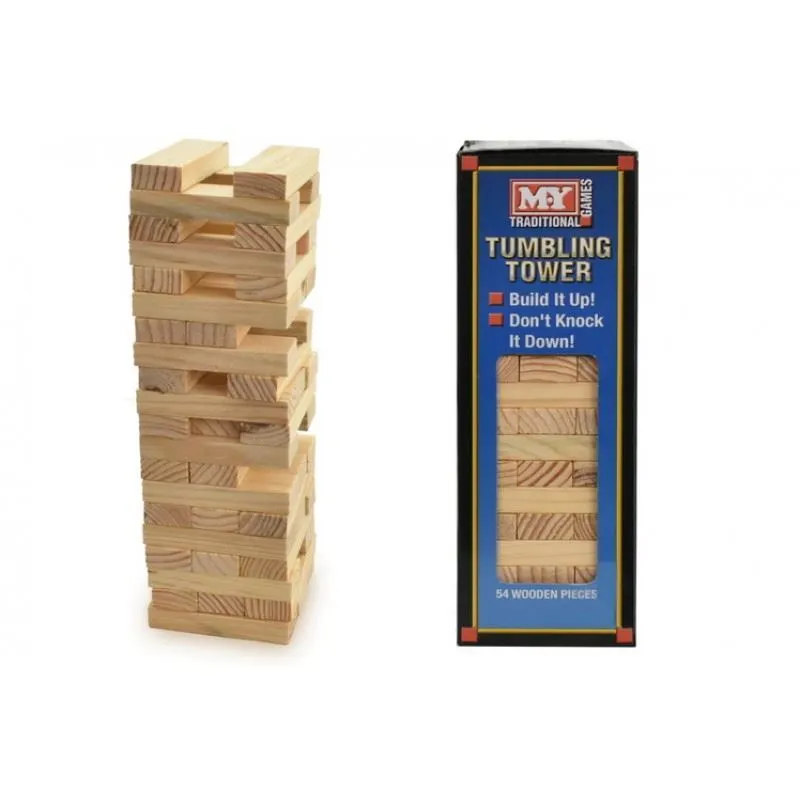Jenga (1983)
Jenga
Jenga is a game of physical skill created by British board game designer and author Leslie Scott and marketed by Hasbro. The game evolved within her family in the early 1970s when they used to play with wooden building blocks purchased from a sawmill in Ghana. Leslie Scott developed the original Jenga Classic game from a wood block stacking game her family had created in Ghana in the 1970s. She launched the game she named and trademarked as “Jenga” at the London Toy Fair in January 1983 and sold it through her own company, Leslie Scott Associates. Traditionally Jenga is played with 54 wooden blocks stacked into a tower. Each block is three times as long as it is wide, and one fifth as thick as its length.
Why is Jenga Popular?
Jenga is popular because it demands skill, involves interaction with other players, provides suspense, and takes place within a finite period of time. It is a game of physical skill that requires coordination, precision, and strategy. The game is significant because it has become an international game icon, with over 50 million sets sold worldwide.
We are supported by our audience. When you purchase through links on our site, we may earn an affiliate commission, at no extra cost for you. Learn more.

